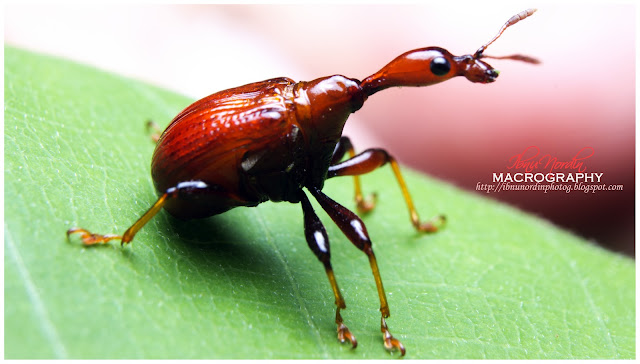The giraffe weevil (Trachelophorus giraffa) is a weevil endemic to Madagascar.It derives its name from an extended neck much like that of the common giraffe. The giraffe weevil is sexually dimorphic, with the neck of the male typically being 2 to 3 times the length of that of the female. Most of the body is black with distinctive red elytra covering the flying wings. The total body length of the males is just under an inch (2.5 cm), among the longest for any Attelabid species. The extended neck is an adaptation that assists in nest building and fighting. When it comes time to breed, the mother-to-be will roll and secure a leaf of the host plant, Dichaetanthera cordifolia and Dichaetanthera arborea (a small tree in the family Melastomataceae), and then lay a single egg within the tube. She will then snip the roll from the remaining leaf in preparation of the egg hatching.
Another beetle with a similar common name is the New Zealand giraffe weevil, Lasiorynchus barbicornis. This is the longest weevil in the world, and is from the family Brentidae.
Reference From Wikipedia, the free encyclopedia









